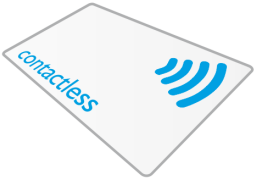 On Wednesday evening at 7pm, TFL are having a ‘#AskTFL’ session on Twitter, where you can ask Shashi Verma about new contactless payment system. We believe though that we’ve already got the answers to the two questions which have been bugging us most:
On Wednesday evening at 7pm, TFL are having a ‘#AskTFL’ session on Twitter, where you can ask Shashi Verma about new contactless payment system. We believe though that we’ve already got the answers to the two questions which have been bugging us most:
How do ticket/revenue inspectors check you’ve tapped in with a contactless card?
Unlike Oyster, nothing is written or stored on a contactless bank card – the system just knows what card you’ve used. So if you are stopped by a revenue inspector when on the tube, the (new) device that they use records the tap of your card and is then checked overnight to determine if that same card was used to tap in at the start of a journey earlier. If not – then a Revenue Inspection Charge (different to a penalty fare) is applied to the offending card.
This might mean though that if you have more than one contactless card, and you accidentally present the wrong one, you’ll be charged more for the journey that you are making.
(TfL wouldn’t answer our question about what the Revenue Inspection Charge would be in the #AskTfL session referenced above, so we FOI’d TfL and were told: “When, as a consequence of revenue inspection activity, we detect that a customer had not touched in at the start of their journey when using a contactless payment card, the inspection event will result in the customer being charged a maximum Oyster fare (as referenced in the TfL Conditions of Carriage available via the following link. [1]http://www.tfl.gov.uk/corporate/terms-an…, being issued with a Penalty Fare Notice or referred for prosecution.”)
What happens if you don’t have any money in your contactless account?
TfL are able to settle some of the transactions that the card issuer may decline, and if a card issuer declines a transaction the system will not allow the card to start new journeys.
Upon a decline, the issuer will still honour the value of the transaction up to a certain amount (on average, more than the daily charge on Oyster Pay as you Go), so the card issuer takes most (not not all) of the risk on declined cards.
All of this is is possible because of the TTM (Transit Transaction Model) that TfL and the card issuers have created to make contactless payments possible.